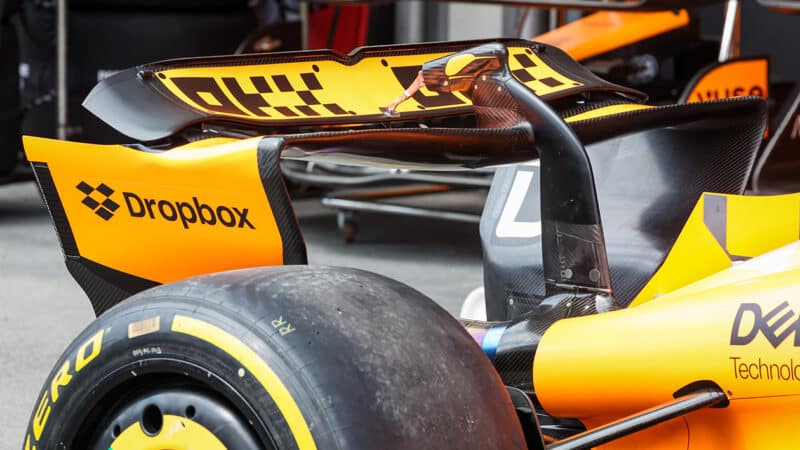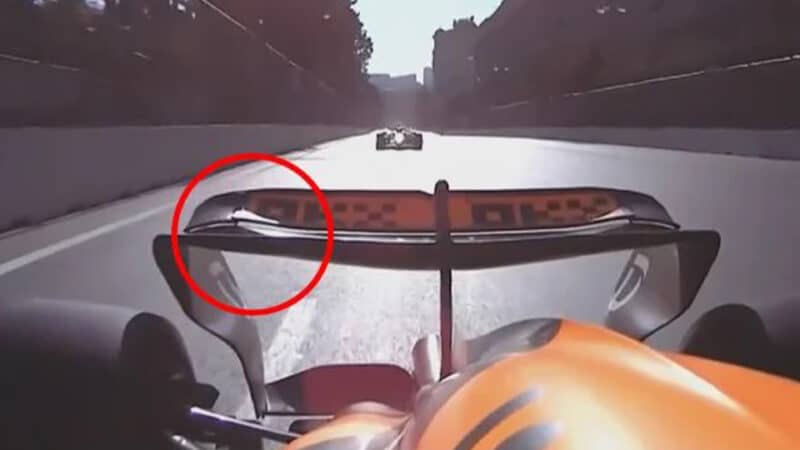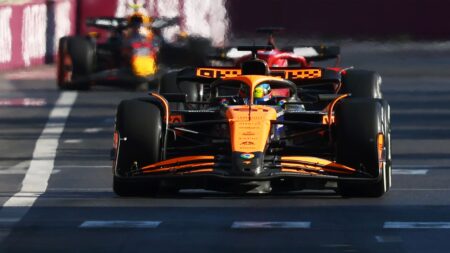That’s part of the game. Red Bull has in the past had its flexing outlawed either by regulation change (rear wing flex in mid-’21, for example) or by a similar ‘we don’t wish to see that again’ approach to that which has just been applied to McLaren.
The team itself emphasised the informal resolution — and suggested that others should be paid a visit by the governing body. “Whilst our Baku rear wing complies with the regulations and pass all FIA deflection tests, McLaren have proactively offered to make some minor adjustments to the wing following our conversations with the FIA,” it said in a statement. “We would also expect the FIA to have similar conversations with other teams in relation to the compliance of their rear wings.”
Rob Marshall, 17 years at Red Bull but for the last year McLaren’s Chief Designer, is renowned for his ingenuity with structures. At Singapore, he explained the process of dialogue which happens before such a feature is introduced. This is where the game starts.
“You wouldn’t discuss it in terms of aero elasticity,” he says. “You discuss the requirements of the regulations, and whether you’re compliant with regulations. You don’t talk about aeroelastics and characteristics. It’s not what the FIA are interested in. They want to ensure that the cars that are delivered to the circuit are compliant with the regulations and any directives and any opinion they may have. And you work with them to ensure that.
“Obviously, the nearer the front you are, the more scrutiny you come under. But all teams scrutinise their own cars, as well as other people’s. We scrutinise our car. Work with the FIA to understand the grey areas of whatever element of the car it is. And move forward accordingly.
“Other teams have all got their own opinions. We work with FIA to establish the legality of our cars. As long as the FIA is happy that’s the only opinion we need to worry about.”
Significantly, the latest action by the FIA comes in the wake of anger from rival teams. It’s all part of the total competition of F1.



